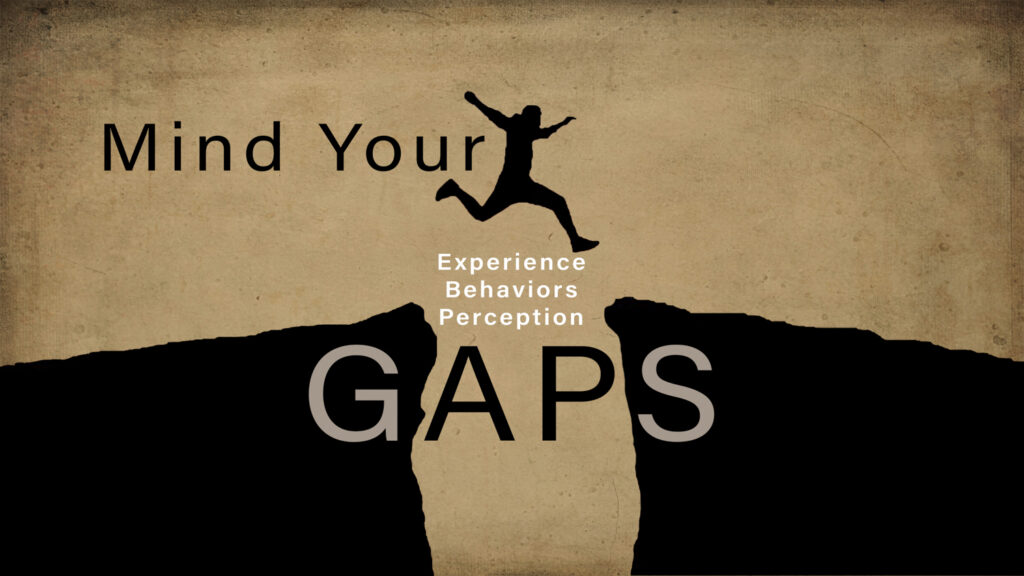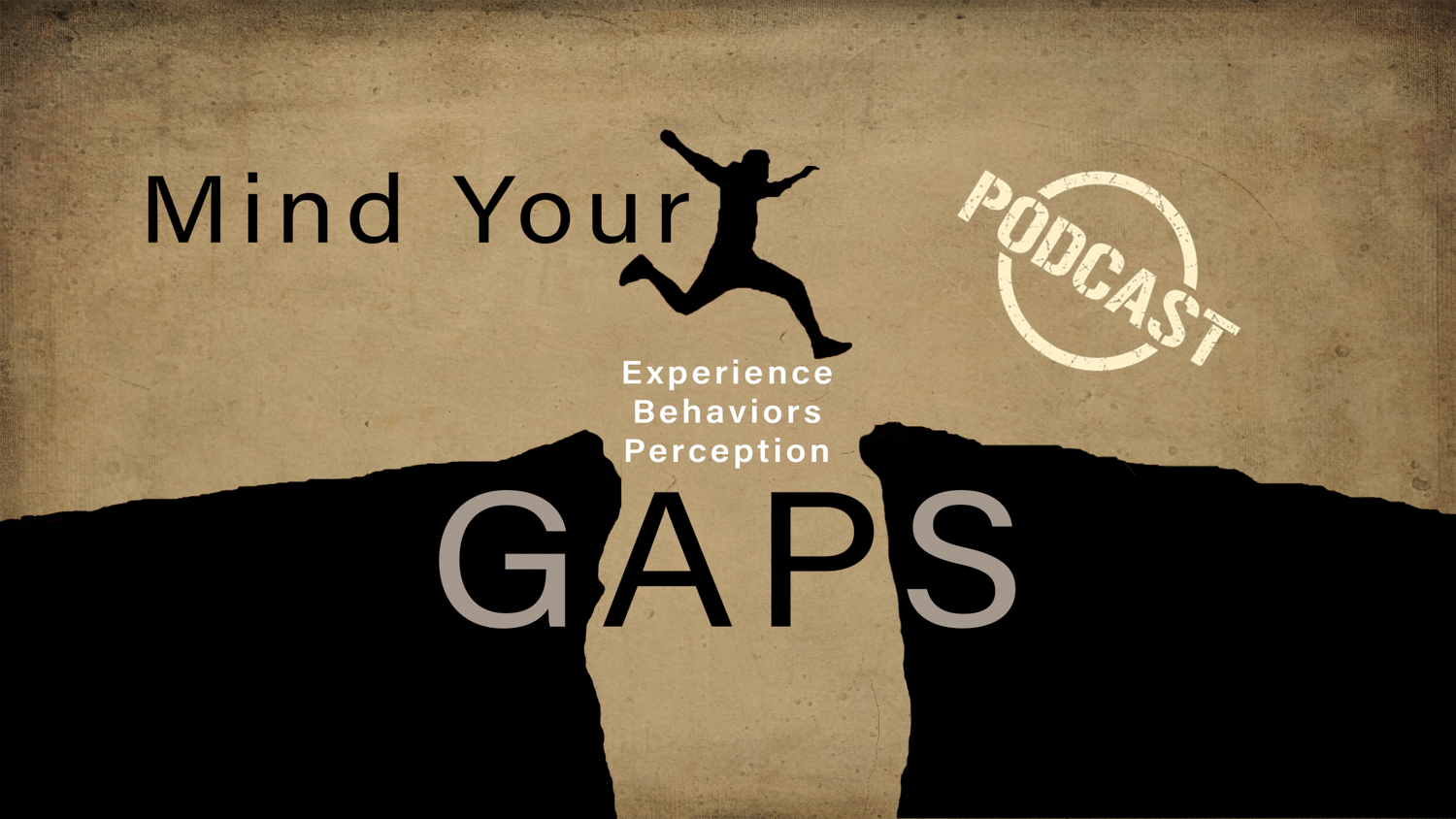In 1968 the London Underground, part of the British railway transport system, introduced the phrase “Mind the gap” as a way to warn their passengers to take extra care when passing the gap between the station platform and the rail door. The reason behind it was to prevent passengers from serious injury or death. This phrase lives on in today’s society. I often relate this phrase to the gaps we have in our abilities to achieve our career goals. Are you minding your gaps? If you fail to identify your gaps, then you may adversely impact your career plan.

Career Planning
Career planning is the first step in a long process to realize your life plan. If you have not completed this step, check out my article on Career Planning. Once you have completed your career plan, you can begin to identify your gaps. Start by understanding the requirements for the next couple of jobs along your career plan path. You will also need a method to assess your readiness for each job. The delta between the job requirements and your readiness are the gaps you need to close to make progress on your career.
Some employees struggle with the gap identification process and the company they work for may not offer the resources needed to do so effectively. Given the challenges in recruiting and filling roles, I am surprised that more companies do not invest in helping employees identify their gaps. The Manpower Group, a Milwaukee-based company that specializes in workforce solutions, recently published its 2019 Talent Shortage survey. The survey pointed out that “attracting and retaining skilled workers has rarely been more challenging” and ”69% of U.S. companies report talent shortages – the highest in more than a decade.” They also pointed out that this is a global problem and that “82% of the countries around the world are struggling with this issue.” At the root of this is the fact that, according to the same survey, “Only 16% of employees say they have ongoing conversations with their managers about their careers.”
If employees are not having career conversations with their manager, then they are likely unaware of the gaps they need to close to achieve their next promotion. This lack of awareness can stymie careers and as a result, slow organizational growth. Turning to recruiting from outside can be expensive, time-consuming and it will likely adversely impact morale. You should always own your career plan, and if your company is not able to help you identify your gaps, then you may need to take control of this process as well.
Assessment Preparation
It is important to be well prepared and to use reliable information to identify your gaps. Make sure you understand the role requirements and that you have the needed tools to assess your readiness and inventory your skills.
Role Requirements: Each role or job type has a set of requirements. Some companies publish them for their employees to see. If they don’t, then seek help from your manager or someone in the Human Resources organization. Either one should be able to help you with this information. It is likely that a set of requirements have not been published. If this is the case, there are other ways to identify these requirements. One effective way is to engage a mentor along your career path. They will be able to spell out the requirements for you.
Inventory Tools: There are two categories of tools available to help you inventory your skills and your readiness for a role.
The first set of useful tools are internal assessments. These assessments are popular tools used by coaches to assess an individual’s personality and preferences. Some of the most popular assessments include the Hogan Leadership Forecast Series, DISC Profile, StrengthsFinder and the Myers-Briggs Type Indicator (MBTI). Assessments like these will help you better understand how you interact with people, process information, make decisions and approach your work.
The second category of tools are external assessments. You may have many of these at your disposal already. These include performance reviews, leadership surveys, and 360-degree feedback reports. You can also solicit periodic feedback from your manager, peers and stakeholders. These tools and methods are excellent ways to understand how people perceive your style, experience, skills and abilities.
You can gain access to both of these types of assessments by checking with your manager or Human Resources representative. If you are considering leveraging 360-degree feedback, then be aware that it comes in two flavors, online survey 360 and interview-based 360. I find the latter more effective and I highly recommend this approach.
Three Types of Gaps
Armed with the role requirements and the available tools, you can now start identifying your gaps. There are three types of gaps that you need to identify and close to make progress on your career.
Experience Gaps: The easiest type of gaps to identify are your experience gaps. As I mentioned previously, the most effective way to identify these gaps is to find a mentor along your career path, someone that is one or two steps ahead of where you are today. This person can help you identify the requirements of the role, help you sort out which requirements are critical, weigh your experience against the requirements and help you identify the gaps.
TIP: If you choose to enlist a mentor, shadow the person for a day and observe them in action. This will help you identify skills and experiences that you may want to develop. Remember to always schedule a debrief session following the shadowing experience to get insights on the actions you observed.
Behavioral Gaps: The second type of gaps, and ones that are harder to close, are behavioral gaps. There are multiple options available to help you identify these gaps. The most popular choice is to use the internal assessments I mentioned previously. These assessments are great at providing you with information about your innate strengths and developmental opportunities. As was the case with experience gaps, you can leverage the 360-degree feedback assessments to obtain people’s opinions on which behaviors you need to close to achieve a future role.
Perception Gaps: The last and certainly the most difficult types of gaps to identify are perception gaps. Perception can last a very long time and some people have very long memories. I recently had a call from a prospective client who mentioned that they were struggling with this issue and felt that their career was at a dead-end as a result. My recommendation to help identify perception gaps is to leverage the interview-based 360 to obtain specific details about what perceptions need to be changed. You may have closed that gap, but the perception is still out there that you have work to do. Once identified, you can then take action to close the perception by networking and informing the decision-makers that you have made progress. Self-promotion is paramount to make progress.
Experience gaps can be closed and mastered with time while behavioral gaps require a lifetime of work to control and they are rarely mastered. Changing perception is hard work and it requires a large investment in time to change people’s minds. If executives do not believe you can do a job because of their perception of you, then closing experience and behavioral gaps will serve little to help you achieve your career goals. This is why it’s important to have a structured approach to identify all three types of gaps. If you do this right, then you can begin constructing a development plan to close your gaps and your odds of executing your career plan successfully will increase dramatically.
Mind your gaps and avoid stalling out your career.
I hope this article was helpful and that you will be able to identify your gaps and take the next step to make your life plan come through. Drop me a note in the comment section below or through the Contact Me page if you have any questions.
Thanks,

© T. Kahler Coaching, LLC, All Rights Reserved.


